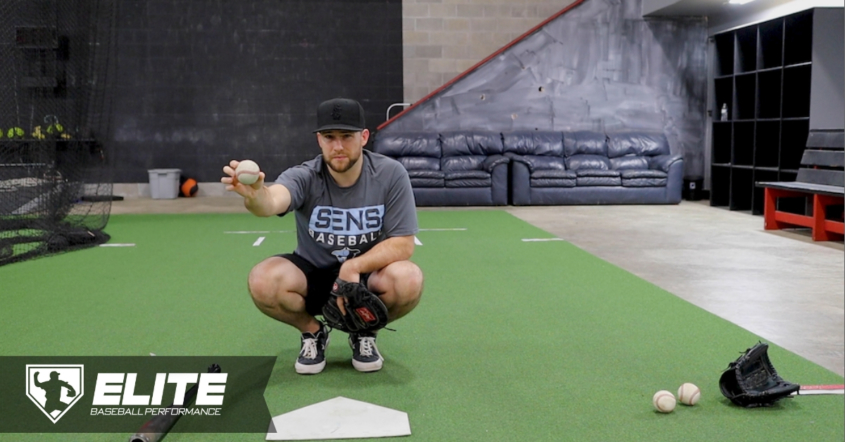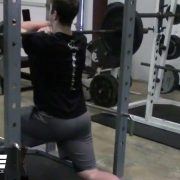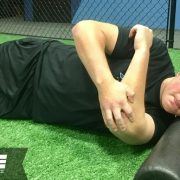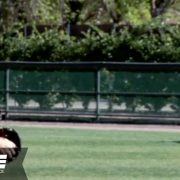Two Pitch-Calling Mistakes that Cause High Pitch Counts
Many young pitchers struggle to get deep into games, instead racking up high pitch counts on long at-bats caused by ineffective pitch-calling strategy. In this article, we’ll discuss common pitch-calling mistakes that cause pitch-counts to inflate too quickly.
Mistake #1: Pursuing Strikeouts on Every Two-Strike Count
The 0-2 count is the right time to pursue a strikeout, as a pitcher is way ahead and eliminates all unlucky outcomes when he strikes a hitter out. On all other counts, however, pitchers should pitch to contact knowing that when they do, strikeouts will still happen–but they’ll end at-bats more quickly and keep pitch-counts low.
Amateur pitchers tend to pitch to unhittable locations when they get into any two-strike count. What often happens is 0-2 becomes 1-2, 1-2 becomes 2-2, and 2-2 becomes 3-2 as a pitcher misses repeatedly. Attempting to throw the perfect strikeout pitch ends up creating long at-bats that become more favorable to hitters over time.
The reality is that hitters aren’t that good, and pitchers fall into the mindset of not wanting to throw a pitch in the strike zone when in a two-strike count. Hitters swing and miss on pitches on the white of the plate all the time, especially at the amateur level.
Watch the video below for an explanation of how curveball locations change in different counts.
Do This Instead: Pitch to Thirds of the Plate on 1-2 and 2-2
A simple solution is sticking with thirds of the plate on 1-2 for all hitters, and 2-2 if the hitter is good enough to warrant it. A pitch located on the outer or inner third is not easy to hit yet still gives a pitcher enough margin for error to throw more strikes and force hitters to swing and put the ball in play.
Mistake #2: Failing to Utilize Halves of the Plate
Most youth pitchers only pitch to two main lateral locations:
– The middle of the plate
– The corners of the plate
Pro and even Major League pitchers slice the plate up into four lateral locations:
– Middle
– Halves
– Thirds
– Corners
The easiest way to use each slice of the plate is by assigning it to common sets of counts:
– Middle: first pitch or behind
– Halves: even counts like 1-1, 2-2, 3-2
– Thirds: 0-1 and 1-2
– Corners: 0-2
Jumping straight from the middle to the corners of the plate leaves the pitchers who are least in command of the baseball (amateurs) with the smallest margin for error. Pitching to the corners of the plate will yield many more well-located pitches that fall just off the plate for balls. Youth pitchers especially need to take aim at more of the white of the plate than the black, giving themselves a better chance of missing their spots yet still getting effective strike calls.
Do This Instead: Utilize the Halves of the Plate Early and Often
Watch the video below for a deeper explanation of how high-level pitchers use the halves of the plate effectively to set themselves up for success later on in the at-bat.
Keep Pitch Counts Low and Earn More Innings
Starters need low pitch counts to get deep into games, and relievers need quick, thrifty innings to bounce back quickly for the next outing. No matter a pitcher’s role, utilizing smart pitch-calling strategies will help him get contribute stronger, longer, more effective outings for his team.
Read Coach Dan’s New Book
If you enjoyed this article, check out a sample chapter of Dan’s upcoming book, Dear Baseball Gods: A Memoir.
Dear Baseball Gods is the true story of how Dan Blewett grew up from a walk-on at a small school to a successful pro pitcher. Two Tommy John surgeries couldn’t keep him from growing into a Two-Time All-Star pitcher. Available in paperback, ebook, and audiobook on April 9th. Dan works with baseball and softball players all over the country.
EBook readers can save on the cover price now, with a limited-time pre-order price.
Dan Blewett
Latest posts by Dan Blewett (see all)
- What Causes A Mental Meltdown in Baseball? - September 3, 2019
- Two Common Curveball Mistakes Pitchers Should Avoid - July 30, 2019
- Is Heavy Lifting Good For Pitchers? - July 2, 2019











Leave a Reply
Want to join the discussion?Feel free to contribute!